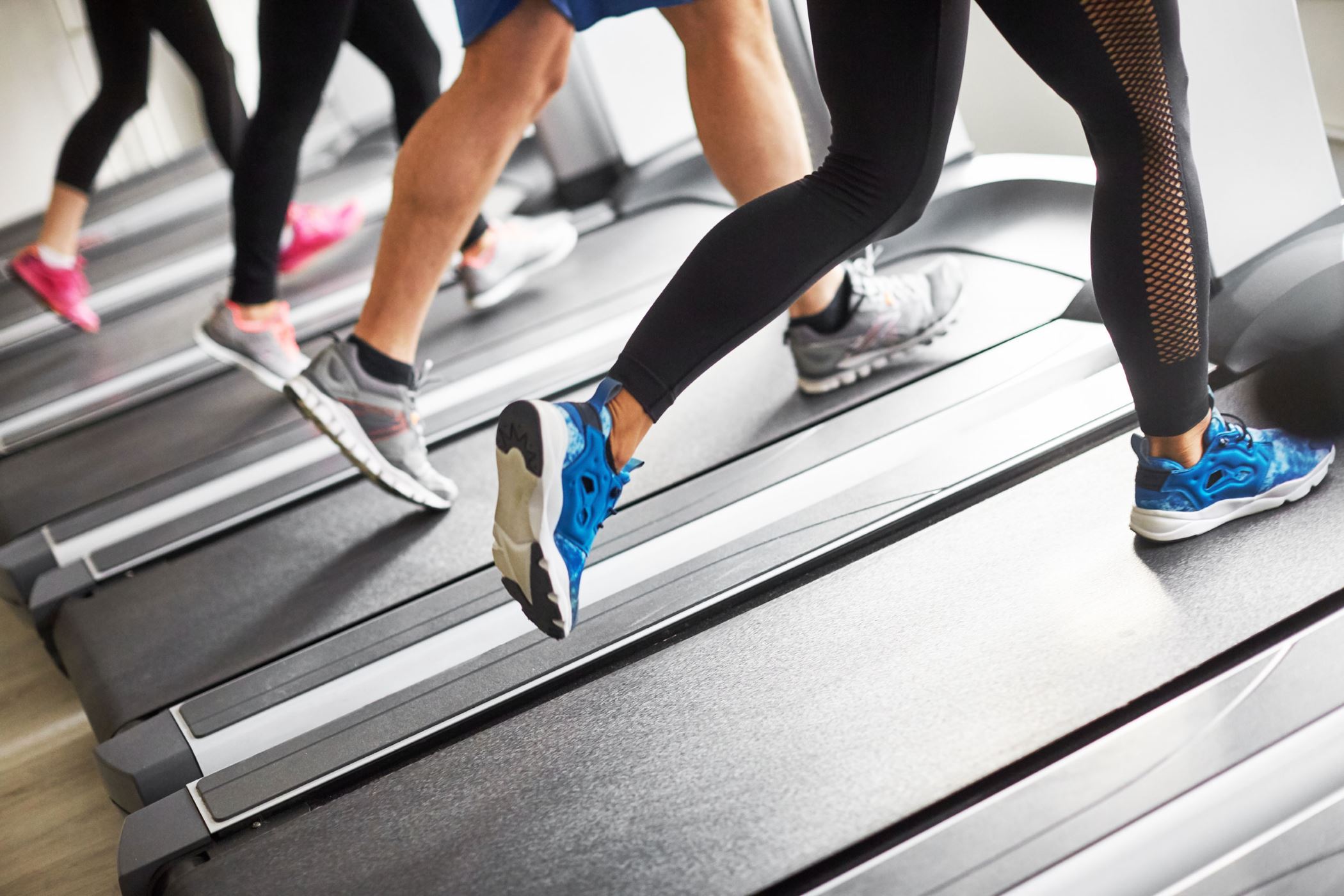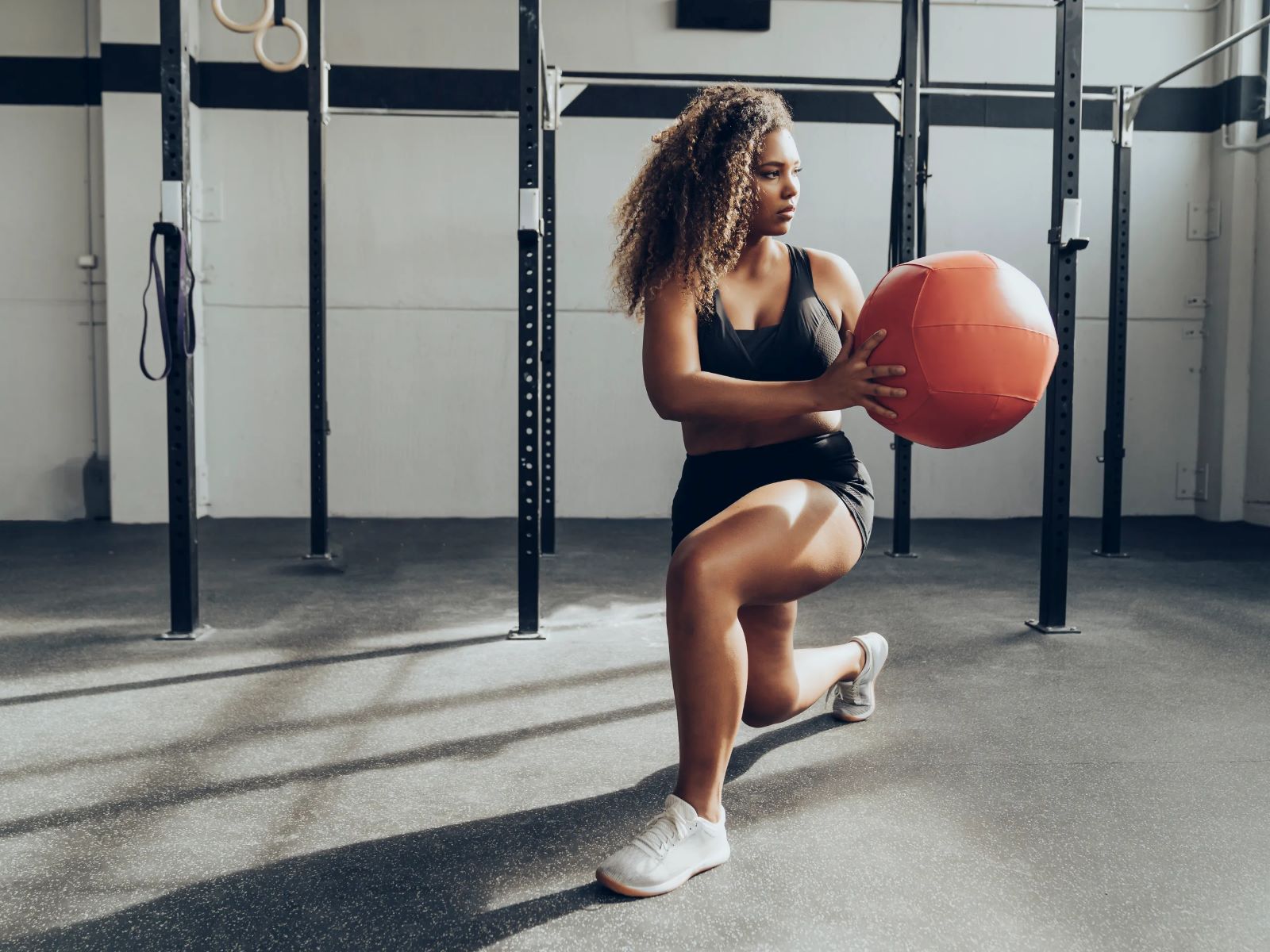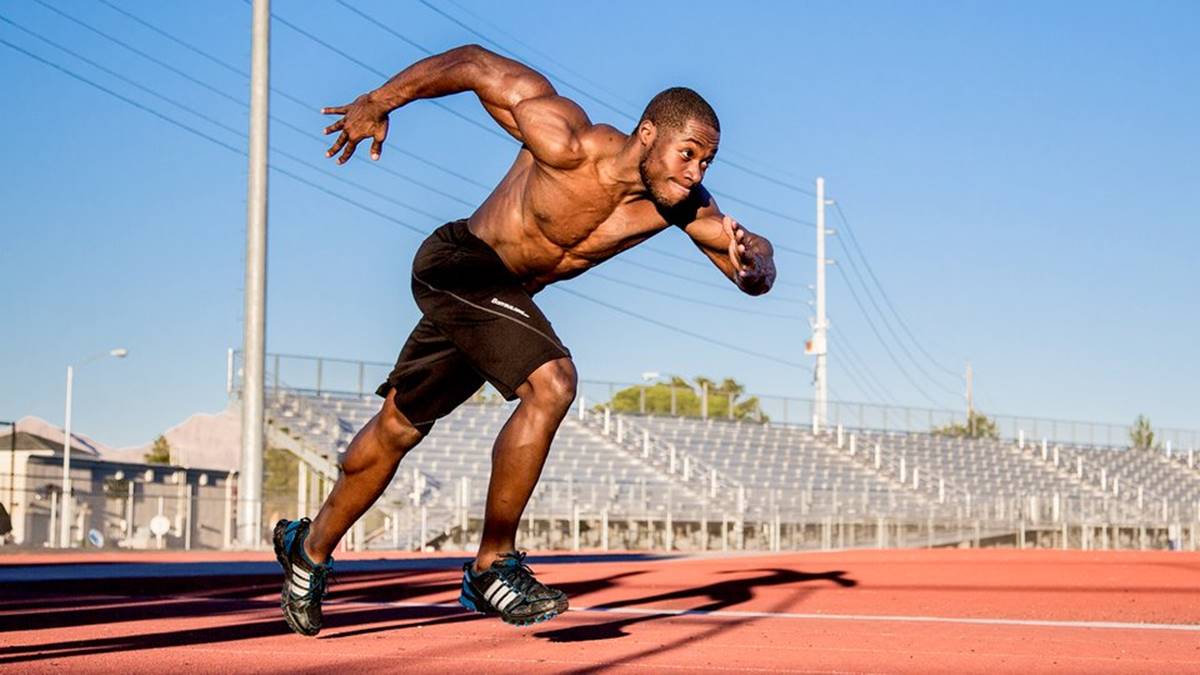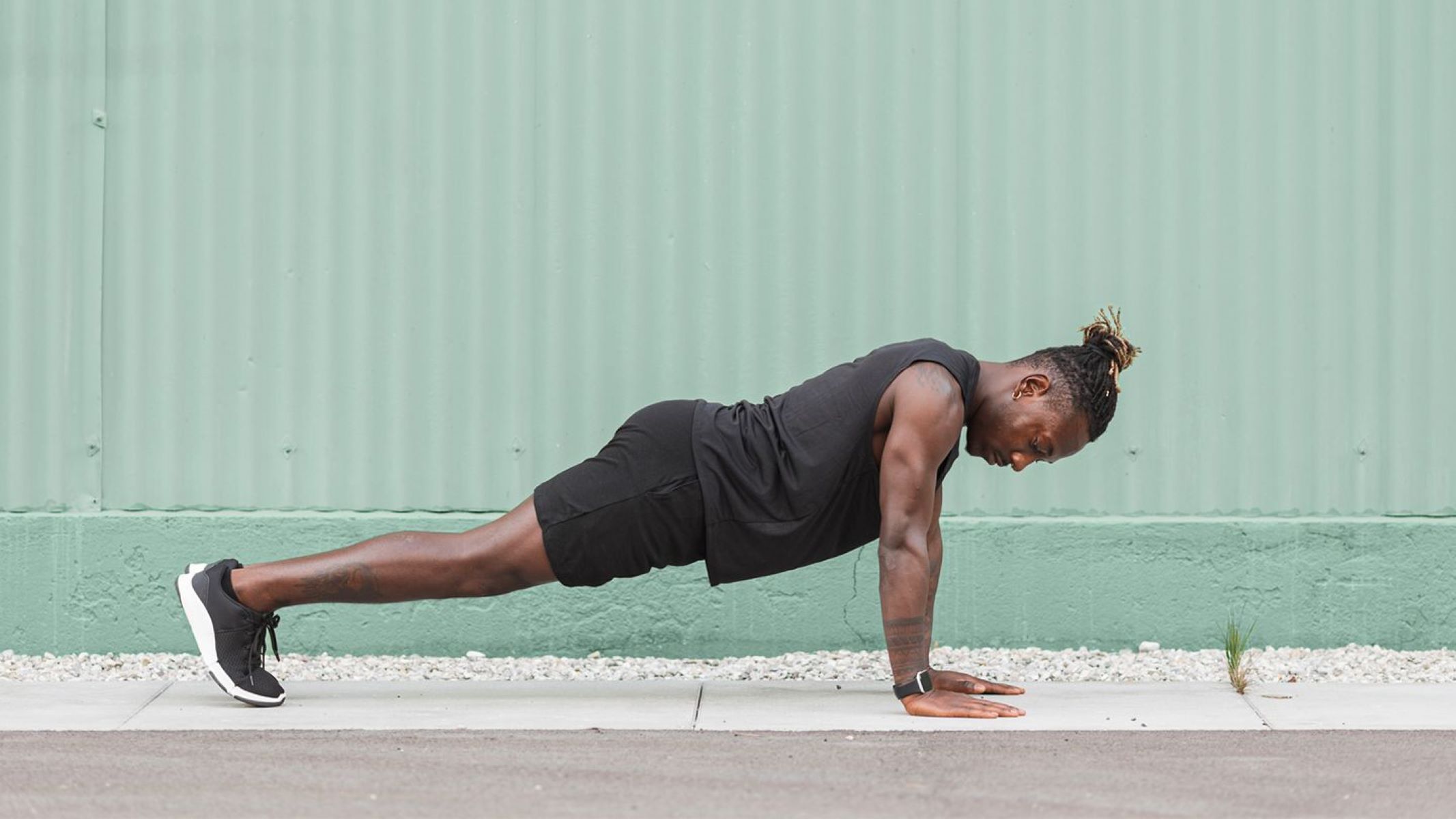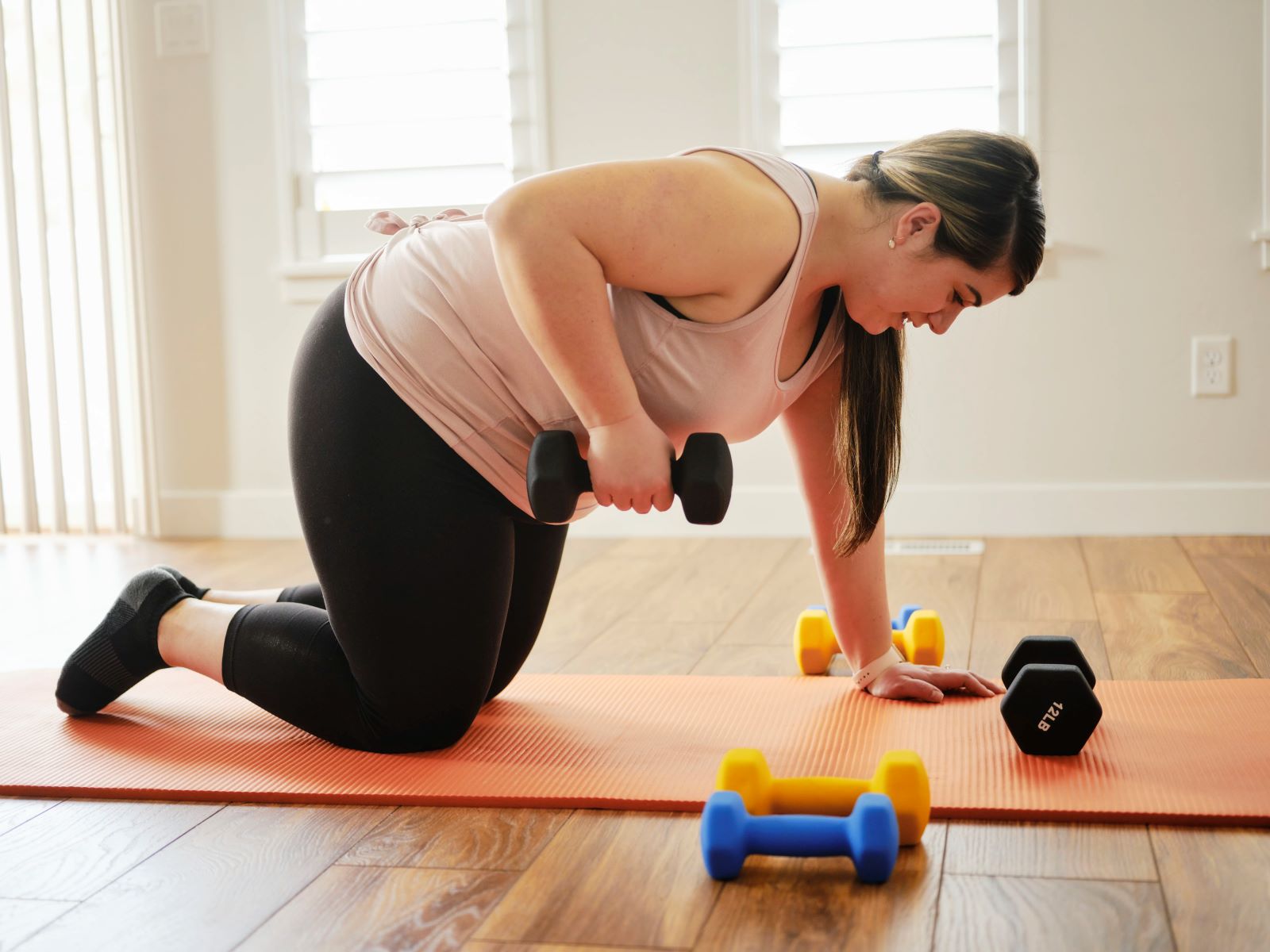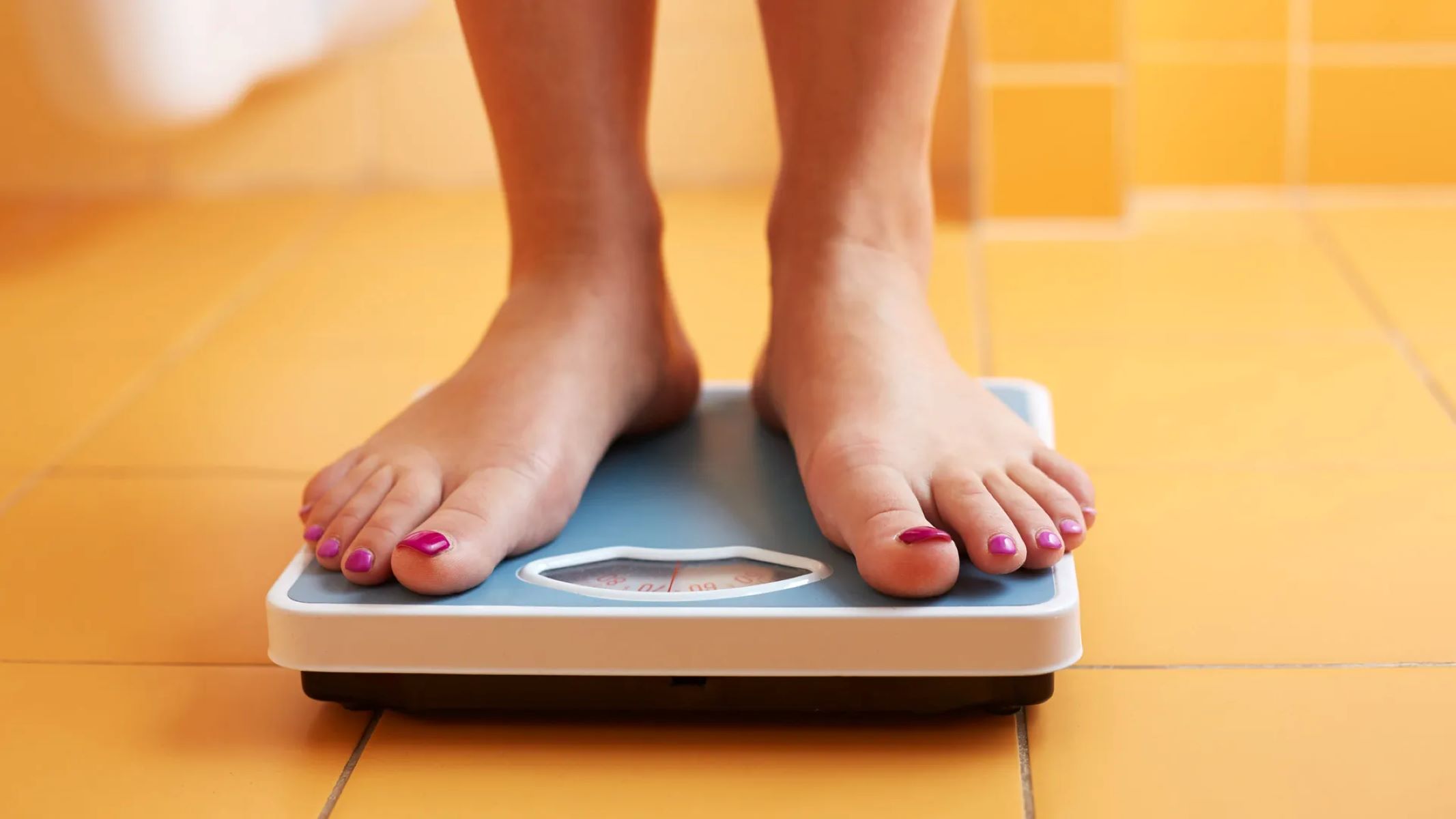

Featured
How Long To See Exercise Results
Published: September 26, 2023
Discover how long it takes to see exercise results. Learn the featured workouts that can help you achieve your fitness goals faster.
Introduction
Embarking on an exercise journey is an exciting and empowering decision. Whether your goal is to lose weight, increase strength, improve cardiovascular health, or enhance overall fitness, it’s natural to wonder how long it will take to see visible results. However, it’s important to understand that the timeline for achieving exercise results can vary greatly from person to person.
Many factors come into play when determining how long it takes to see exercise results. Factors such as exercise frequency and consistency, exercise intensity and duration, genetics, diet and nutrition, and rest and recovery all play a significant role in achieving desired outcomes. By understanding how these factors influence exercise results, you can set realistic expectations and create a tailored approach to reach your goals.
In this article, we will discuss the various factors that influence exercise results and provide insights into how long it typically takes to see changes in different aspects of fitness. It’s important to note that while general timelines can be helpful as a guideline, individual experiences may vary. The key is to focus on consistency, effort, and making sustainable lifestyle changes that promote long-term health and well-being.
Factors that Influence Exercise Results
When it comes to seeing exercise results, several factors come into play. Understanding these factors can help you tailor your fitness routine and set realistic expectations. Let’s delve into some of the key factors that play a role in influencing how long it takes to see exercise results:
- Exercise Frequency and Consistency: Consistency is key when it comes to seeing results from your exercise routine. Regular physical activity, performed at least three to five times a week, helps to build momentum and allows your body to adapt to the demands placed on it. Aim for a balanced exercise routine that incorporates cardiovascular exercise, strength training, and flexibility work.
- Exercise Intensity and Duration: The intensity and duration of your workouts also play a significant role in achieving exercise results. Higher intensity workouts, such as interval training or circuit training, can help increase calorie burn and improve cardiovascular fitness. However, it’s essential to listen to your body and gradually increase intensity to avoid overexertion or injury.
- Genetics and Individual Differences: It’s important to recognize that every individual is unique, and genetics can influence how quickly you see exercise results. Some individuals may naturally have a faster metabolism or a predisposition towards gaining muscle. Don’t compare your progress to others; focus on your own journey and celebrate the improvements you make.
- Diet and Nutrition: Exercise and nutrition go hand in hand when it comes to achieving desired results. Fueling your body with nutritious foods supports muscle repair, enhances energy levels, and aids in recovery. Aim for a well-balanced diet that includes a variety of fruits, vegetables, lean proteins, whole grains, and healthy fats.
- Rest and Recovery: Allowing your body adequate time to rest and recover is crucial for seeing exercise results. Include rest days in your exercise routine to prevent burnout and reduce the risk of injury. During rest periods, your muscles have a chance to repair and rebuild, which can lead to increased strength and endurance.
By taking these factors into consideration and creating a personalized fitness plan that takes into account your unique circumstances, you can optimize the time it takes to see exercise results. Keep in mind that consistency, patience, and a balanced approach are key ingredients to long-term success.
Exercise Frequency and Consistency
When it comes to achieving exercise results, one of the most important factors is the frequency and consistency of your workouts. Consistency is the key to progress and seeing tangible outcomes from your exercise routine. Here’s a closer look at how exercise frequency and consistency impact your results:
Frequent Workouts: Consistently engaging in physical activity is crucial for making strides towards your fitness goals. Ideally, aim to exercise at least three to five times per week. This regularity allows your body to adapt to the demands placed on it and helps to build momentum in your fitness journey.
Varied Exercise Routine: Incorporating a mix of cardiovascular exercise, strength training, and flexibility work into your routine ensures a well-rounded approach to fitness. This variety not only improves overall fitness but also prevents boredom and reduces the risk of overuse injuries. Mixing up your workouts keeps your body challenged and continuously progressing.
Gradual Progression: It’s important to find a balance between pushing yourself and allowing your body time to adapt. Gradually increase the duration and intensity of your workouts over time to avoid burnout or injury. Pushing too hard too soon can lead to setbacks and hinder your progress.
Accountability and Support: Having a support system or an accountability partner can greatly improve consistency. It’s easier to stay motivated and committed when you have someone to share your fitness journey with. Consider joining a group fitness class, enlisting the help of a personal trainer, or seeking encouragement from friends and family.
Maintaining a Sustainable Routine: Building a consistent exercise routine means finding a balance between challenging yourself and maintaining a sustainable schedule. It’s crucial to select activities that you enjoy and that fit into your lifestyle. This will increase the likelihood of sticking to your routine for the long term.
Remember, exercise frequency and consistency are vital ingredients in achieving desired results. By committing to regular workouts and adopting a sustainable approach, you’ll be on the path to progress and improved fitness.
Exercise Intensity and Duration
The intensity and duration of your workouts are crucial factors to consider when it comes to achieving exercise results. Finding the right balance between intensity and duration can make a significant impact on your progress. Let’s explore how exercise intensity and duration influence your results:
Intensity: The intensity of your workouts refers to how hard you are working during exercise. Higher intensity workouts, such as interval training or circuit training, can lead to greater calorie burn and cardiovascular improvements. By pushing your body to work at a higher intensity, you can stimulate adaptations that result in increased strength, endurance, and overall fitness. However, it’s important to listen to your body and gradually increase intensity to avoid overexertion and potential injuries.
Duration: The duration of your workouts refers to the length of time you spend exercising. Shorter, more intense workouts can be just as effective as longer, moderate-intensity workouts. In fact, research suggests that shorter, high-intensity workouts, such as HIIT (High-Intensity Interval Training), can yield comparable results to longer, moderate-intensity workouts in terms of cardiovascular fitness and calorie burn. However, it’s essential to find a duration that suits your fitness level and allows you to maintain proper form and technique throughout the workout.
Progressive Overload: To continue seeing results over time, it’s important to progressively challenge your body by increasing the intensity or duration of your workouts. This principle, known as progressive overload, stimulates muscular adaptations and improved fitness. Gradually adding more weight, increasing resistance, or extending the duration of your workouts can help prevent plateaus and keep your progress moving forward.
Listen to Your Body: It’s crucial to listen to your body and find the right balance of intensity and duration that works for you. Pushing yourself too hard without giving your body adequate time to rest and recover can lead to overtraining and potential injuries. On the other hand, not challenging yourself enough may not yield the desired results. Pay attention to how your body feels during and after your workouts and make adjustments as necessary.
Individual Differences: It’s important to remember that everyone’s optimal exercise intensity and duration can differ based on factors such as fitness level, age, and health conditions. What works for someone else may not work for you. It’s essential to honor your own body and find the intensity and duration that feel challenging yet sustainable for your specific needs and goals.
By finding the right balance between exercise intensity and duration, you can optimize your workouts and maximize the effectiveness of your fitness routine. Experiment with different exercise modalities, intensities, and durations to discover what works best for you on your journey towards achieving exercise results.
Genetics and Individual Differences
When it comes to achieving exercise results, it’s important to understand that every individual is unique. Genetics play a significant role in how our bodies respond to exercise and the rate at which we see visible changes. Here’s a closer look at how genetics and individual differences impact exercise results:
Metabolic Rate: Your metabolic rate, which is influenced by genetics, determines how efficiently your body burns calories. Some individuals naturally have a faster metabolism, allowing them to burn calories more quickly and potentially see results at a quicker pace. On the other hand, individuals with a slower metabolism may need to be more diligent and patient in their journey toward achieving exercise results.
Muscle Fiber Composition: Another genetic factor that plays a role in exercise results is muscle fiber composition. There are two main types of muscle fibers: fast-twitch and slow-twitch. Fast-twitch fibers are responsible for explosive movements and strength, while slow-twitch fibers are involved in endurance activities. The ratio of fast-twitch to slow-twitch fibers differs among individuals and can impact how quickly and easily muscles grow or become defined.
Hormonal Balance: Hormonal imbalances can also influence exercise results. Hormones such as testosterone and estrogen play a role in muscle growth, fat loss, and overall body composition. Genetic variations can impact hormone levels, which in turn affect the rate at which changes occur in response to exercise. It’s important to note that while genetics can influence hormonal balance, lifestyle factors such as diet and exercise can also play a significant role in hormone regulation.
Recovery and Injury Susceptibility: Genetic factors can also affect recovery rates and injury susceptibility. Some individuals may have a genetic predisposition that allows for faster recovery and lower risk of injury. Others may be more prone to certain injuries or experience longer recovery times. Understanding your body’s specific needs and limitations can help you adjust your exercise routine and ensure optimal recovery and injury prevention.
Variations in Body Composition: Genetics can influence body composition, determining how your body stores and distributes fat, as well as how easily you gain or lose weight. Some individuals may have a natural predisposition to carrying more weight in specific areas, while others may find it easier to build muscle or lose fat in certain regions. Recognizing and accepting your own genetic makeup is important in setting realistic goals and maintaining a positive body image.
While genetics may influence how quickly you see exercise results, it’s important not to use them as an excuse or limitation. Adopting healthy lifestyle habits, focusing on consistent exercise, proper nutrition, and adequate rest can help you optimize your genetic potential and achieve your fitness goals. Celebrate your individuality and progress, knowing that everyone’s journey is unique.
Diet and Nutrition
When it comes to achieving exercise results, diet and nutrition play a crucial role. The foods we consume provide the fuel and nutrients our bodies need to perform optimally and see visible changes. Let’s explore how diet and nutrition impact exercise results:
Fuel for Workouts: The food you consume before, during, and after your workouts can significantly impact your performance and recovery. Prioritize carbohydrates, such as whole grains, fruits, and vegetables, to provide energy for exercise. Include lean proteins for muscle repair and growth, and don’t forget healthy fats for sustained energy. Proper fueling ensures you have the energy to push through your workouts and support muscle recovery afterward.
Building Muscle: To see visible changes and improvements in muscle tone and strength, consuming adequate protein is essential. Protein is the building block of muscles and is necessary to repair and rebuild muscle fibers broken down during exercise. Aim to include a source of protein in each meal, such as lean meats, poultry, fish, eggs, dairy, legumes, or plant-based protein options.
Weight Management: Achieving exercise results often involves managing weight, whether it’s losing excess body fat or building lean muscle mass. This is where the importance of a well-balanced diet comes into play. Maintaining a calorie deficit, through a combination of exercise and a healthy eating plan, can help with weight loss. On the other hand, ensuring adequate calorie intake is crucial for promoting muscle growth and preventing muscle breakdown.
Micronutrients and Recovery: Alongside macronutrients (carbohydrates, proteins, and fats), micronutrients are also vital for exercise results. Nutrients such as vitamins, minerals, and antioxidants play a role in supporting immune function, reducing inflammation, and aiding in recovery after workouts. Consume a variety of fruits, vegetables, whole grains, and nuts to ensure you’re getting a wide range of nutrients necessary for optimal health and exercise performance.
Hydration: Don’t overlook the importance of hydration when it comes to exercise results. Hydration directly affects athletic performance, energy levels, and overall well-being. Aim to drink plenty of water throughout the day, especially before, during, and after your workouts. If engaging in intense or prolonged exercise, consider electrolyte-rich beverages to replenish lost minerals.
Individual Needs: It’s important to recognize that everyone’s nutritional needs may vary based on factors such as age, gender, activity level, and specific goals. Consulting with a registered dietitian or nutritionist can help you create a personalized nutrition plan that aligns with your exercise routine and supports your unique needs.
Remember, exercise alone is not enough to achieve desired results. Combining regular physical activity with a nutritious and well-balanced diet is key to optimizing exercise outcomes, supporting overall health, and maximizing the benefits of your hard work.
Rest and Recovery
When it comes to achieving exercise results, rest and recovery are just as important as the workouts themselves. Allowing your body adequate time to rest and recover is crucial for optimizing performance, preventing injuries, and seeing long-term progress. Here’s a closer look at why rest and recovery are essential:
Muscle Repair and Growth: During exercise, your muscles experience micro-tears, which is a natural part of the muscle-building process. Rest and recovery allow these muscles to repair and rebuild, leading to increased strength and improved performance over time. Skipping rest days and overtraining can impede muscle repair, potentially leading to plateaus or even injuries.
Preventing Overuse Injuries: Overtraining without proper rest and recovery can increase the risk of overuse injuries, such as tendonitis or stress fractures. These injuries can set you back and hinder your progress. Incorporating rest days and listening to your body’s signals can help prevent these injuries and keep you on track towards your exercise goals.
Energy Restoration: Intense workouts require significant energy expenditure. Rest and recovery periods allow your body to replenish its energy stores, ensuring you have the fuel necessary to continue pushing yourself during future workouts. Without adequate rest, you may experience fatigue, decreased performance, and diminished motivation.
Stress Reduction: Physical exercise places stress on both your muscles and your mind. Rest and recovery provide an opportunity for relaxation and stress reduction. Activities such as stretching, meditation, or indulging in hobbies can help promote mental well-being and alleviate accumulated stress. A balanced approach combining exercise and rest helps maintain a positive mindset and overall mental health.
Sleep Quality: Rest and recovery include getting sufficient sleep, which is crucial for overall health and exercise results. During sleep, your body undergoes important repairs, hormone regulation, and memory consolidation. Aim for seven to nine hours of quality sleep per night to support optimal recovery and maximize the benefits of your workouts.
Individual Needs: It’s important to listen to your body and recognize that the ideal amount of rest and recovery varies for each person. Factors such as age, fitness level, and the intensity of your workouts can influence how much rest you need. Adjustments may be necessary based on how your body responds to exercise, ensuring you strike the right balance between challenging yourself and allowing for adequate recovery.
Remember, rest and recovery are not a sign of weakness or laziness; they are an essential part of the exercise process. Providing your body with the time and care it needs to repair, replenish, and recharge will ultimately lead to better exercise results and a more sustainable fitness journey.
Common Exercise Goals and Expected Timeframes
When setting exercise goals, it’s important to have realistic expectations and understand that the timeframes for achieving these goals can vary. The following are some common exercise goals and general timelines to give you an idea of what to expect:
Weight Loss: Weight loss is a common exercise goal, but the rate at which it occurs can differ for each individual. On average, a safe and sustainable weight loss is about 1-2 pounds per week. However, it’s important to remember that weight loss is not solely dependent on exercise. Proper nutrition, calorie balance, and lifestyle factors also play significant roles in achieving weight loss goals.
Increased Strength: Building strength takes time and consistency. It typically requires regular strength training exercises that target major muscle groups. For noticeable strength gains, aim to train two to three times per week for at least 8-12 weeks. However, incremental improvements in strength can be felt even within a few weeks of consistent training.
Muscle Definition: Achieving visible muscle definition varies depending on your starting point and genetic factors. It typically involves a combination of strength training, proper nutrition, and reducing body fat percentage. With consistent workouts and a well-balanced diet, you may start to see some muscle definition within a few months, while more significant results may take 3-6 months or longer.
Improved Cardiovascular Endurance: Improving cardiovascular endurance generally involves regular aerobic exercise, such as running, cycling, or swimming. With consistent training, you can expect to see improvements in cardiovascular fitness within a few weeks. However, it may take several months of consistent training to notice significant increases in endurance and performance.
Flexibility and Mobility: Improving flexibility and mobility is a gradual process that requires consistent stretching and mobility exercises. Progress can vary depending on your starting point and individual factors. With dedicated practice, you can expect to see noticeable improvements in flexibility over a few weeks to several months.
Overall Fitness Level: Increasing your overall fitness level involves improvements in multiple aspects, such as strength, endurance, flexibility, and body composition. It’s a comprehensive goal that takes time and a consistent approach to exercise and nutrition. It may take several months to a year or more of regular exercise to see significant improvements in overall fitness.
It’s important to note that these timelines are general guidelines, and individual experiences may vary. Factors such as genetics, starting fitness level, consistency, and lifestyle habits all play a role in the time it takes to achieve exercise goals. Rather than solely focusing on the timeline, prioritize consistency, listen to your body, and celebrate the small milestones along the way.
Realistic Expectations and Patience
When embarking on an exercise journey, it’s important to have realistic expectations and understand that achieving results takes time and patience. Here’s why setting realistic expectations and practicing patience are crucial for a successful fitness journey:
Variability in Results: Everyone’s body is unique, and exercise results can vary from person to person. Factors such as genetics, starting fitness level, and adherence to a well-balanced routine all play a role in determining the speed and magnitude of results. Comparing your progress to others may lead to frustration and disappointment. Instead, focus on your own journey and celebrate the improvements you make along the way.
Long-Term vs. Short-Term Goals: It’s important to differentiate between short-term and long-term goals. Short-term goals are achievable within weeks or a few months, while long-term goals may take several months or even years to fully accomplish. Understanding that meaningful changes in fitness and body composition take time and consistency can help prevent discouragement and maintain motivation throughout the process.
Healthy and Sustainable Progress: Rapid changes may seem enticing, but they are often not sustainable or healthy. Crash diets or extreme exercise regimens may yield quick results initially, but they can lead to negative health consequences and rebound effects. Embrace the mindset of making gradual changes to your diet and exercise routine that you can maintain for the long term. This approach promotes overall health and ensures that the results you achieve are sustainable.
Non-Scale Victories: Instead of solely relying on the number on the scale as a measure of progress, consider other indicators of success. Pay attention to how you feel, improvements in strength and endurance, changes in body composition, or positive shifts in mood and energy levels. Recognizing and celebrating these non-scale victories can boost motivation and provide a more accurate reflection of your progress.
Embrace the Journey: Fitness is a lifelong journey, and it’s important to enjoy the process along the way. Results may not happen overnight, but each workout, healthy meal choice, and small step forward is a building block towards your goals. Embrace the daily habits and lifestyle changes that contribute to your overall well-being. Focus on progress rather than perfection and find joy in the activities and routines that make you feel good.
Maintaining a Positive Mindset: Having a positive mindset and practicing self-compassion is vital for long-term success. Acknowledge that setbacks and plateaus are a normal part of the fitness journey. Instead of becoming discouraged, use them as opportunities to learn and adjust your approach. Patience, consistency, and cultivating self-love and acceptance will ensure a more enjoyable and sustainable path towards your exercise goals.
Remember, fitness is not just a destination but a continuous journey. Realistic expectations and patience are key to maintaining a positive mindset, staying motivated, and achieving long-term success. Embrace the process, trust in your efforts, and celebrate each milestone along the way.
Monitoring Progress and Adjusting Goals
When it comes to exercise, monitoring progress and adjusting goals are essential for staying on track and maintaining motivation. Regularly assessing your progress allows you to make informed decisions and optimize your exercise routine. Here are some key reasons why monitoring progress and adjusting goals are beneficial:
Tracking Measurements: Keeping track of measurements such as weight, body fat percentage, body measurements, and fitness benchmarks provides tangible evidence of your progress. Regularly check and record these measurements, but remember that they are just one aspect of your overall progress. Use them as a tool to assess changes over time, but place equal importance on how you feel and the overall improvements to your health and well-being.
Documenting Training: Maintain a workout log or use apps that track your exercise sessions. Recording details such as the type of exercise, duration, intensity, and any observations can help you identify patterns, track improvements, and stay accountable to your fitness routine. This information can also help you determine if you need to adjust your workouts to meet specific goals.
Listening to Your Body: Paying attention to how your body feels during and after exercise is a valuable tool for progress evaluation. Notice if your workouts are becoming easier, if you’re able to lift heavier weights or run longer distances, or if you experience decreased soreness or improved recovery. These signs can indicate progress and give you insight into when it may be appropriate to challenge yourself further.
Goal Setting and Adjustments: Regularly re-evaluate your goals to ensure they align with your current priorities and progress. Adjusting goals allows for continued growth and keeps your exercise routine fresh and motivating. Goals should be specific, measurable, attainable, relevant, and time-bound (SMART). Whether it’s increasing the intensity or duration of your workouts, trying new exercise modalities, or setting specific performance objectives, regularly reassessing and adjusting goals will keep you engaged and continuously striving for improvement.
Seeking Professional Guidance: Consider working with a personal trainer or exercise professional who can provide expert guidance and help track your progress. They can assess your current fitness level, set appropriate goals, and design an individualized program to help you reach those goals. Their expertise and feedback are invaluable when it comes to monitoring progress and making necessary adjustments.
Emphasizing Non-Scale Victories: Look beyond the numbers on the scale and focus on non-scale victories along your fitness journey. Celebrate achievements such as improved energy levels, increased stamina, better sleep, stress reduction, or enhanced mood. These non-scale victories are equally significant indicators of progress and can help maintain motivation and a positive mindset.
Regularly monitoring progress and adjusting goals are essential for long-term success in exercise. By keeping track of measurements, documenting training, listening to your body, setting and adjusting goals, seeking professional guidance, and embracing non-scale victories, you can ensure that your exercise routine remains effective, exciting, and aligned with your desired outcomes.
Conclusion
Embarking on an exercise journey is an exciting and transformative endeavor. Understanding the factors that influence exercise results, setting realistic expectations, and practicing patience are key to achieving long-term success. Monitoring progress, adjusting goals, and embracing the journey are vital components of maintaining motivation and staying on track. Remember, your fitness journey is unique, and results may vary based on individual factors such as genetics, starting fitness level, and consistency. It’s important to focus on progress over perfection, celebrate non-scale victories, and prioritize overall well-being, rather than just solely focusing on aesthetic goals.
By finding the right balance between exercise frequency and consistency, adjusting the intensity and duration of your workouts, recognizing the impact of genetics and individual differences, prioritizing a well-balanced diet and proper nutrition, allowing for sufficient rest and recovery, and monitoring progress and adjusting goals, you can optimize your exercise routine and maximize the likelihood of achieving desired outcomes.
Throughout your fitness journey, remember to listen to your body, honor your individual needs, and make sustainable lifestyle changes that promote long-term health and well-being. Stay committed, be patient, and enjoy the process of becoming the best version of yourself through exercise. Embrace the ups and downs, cherish the progress you make, and celebrate each step forward on your path toward a healthier, stronger, and happier you.
